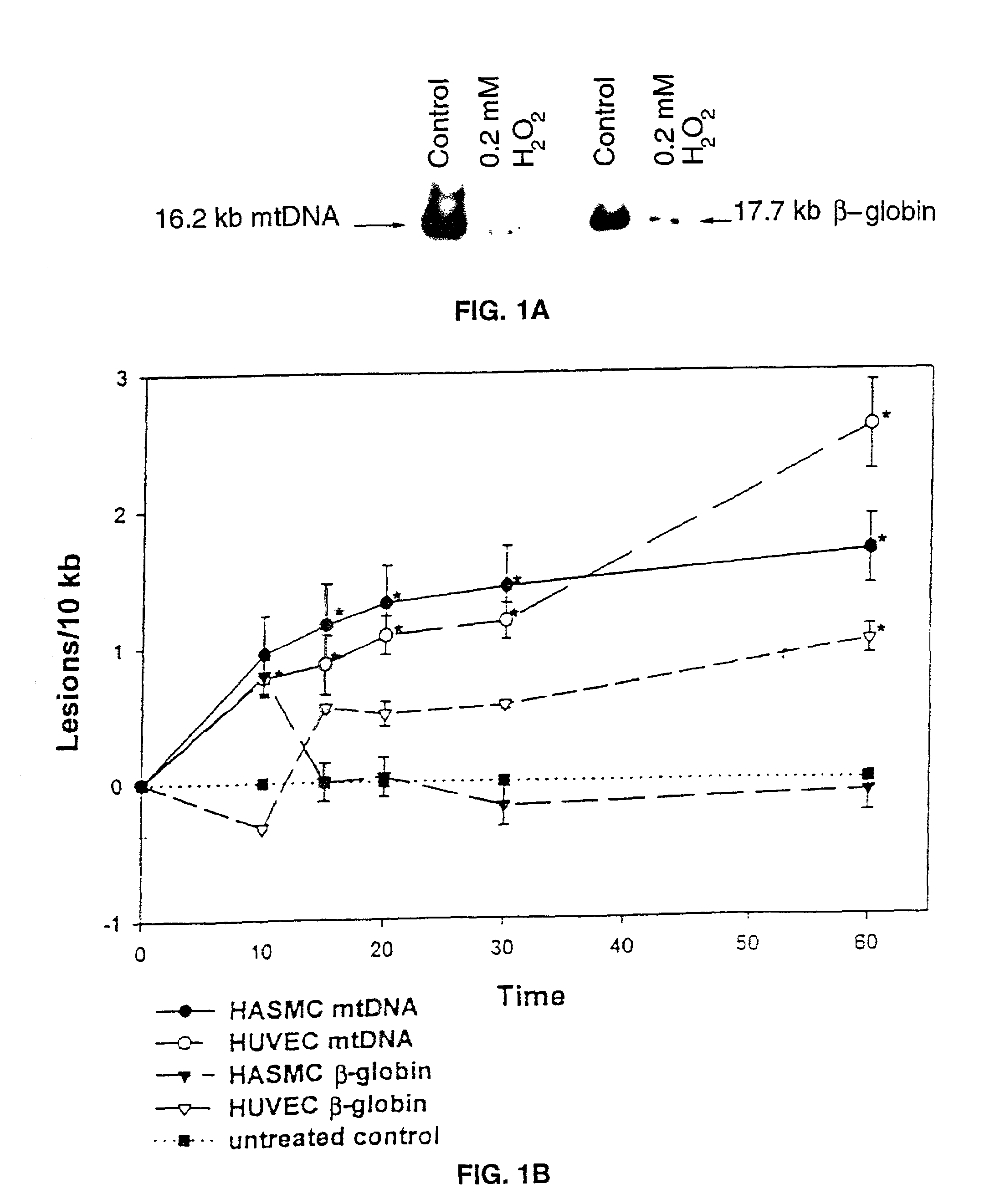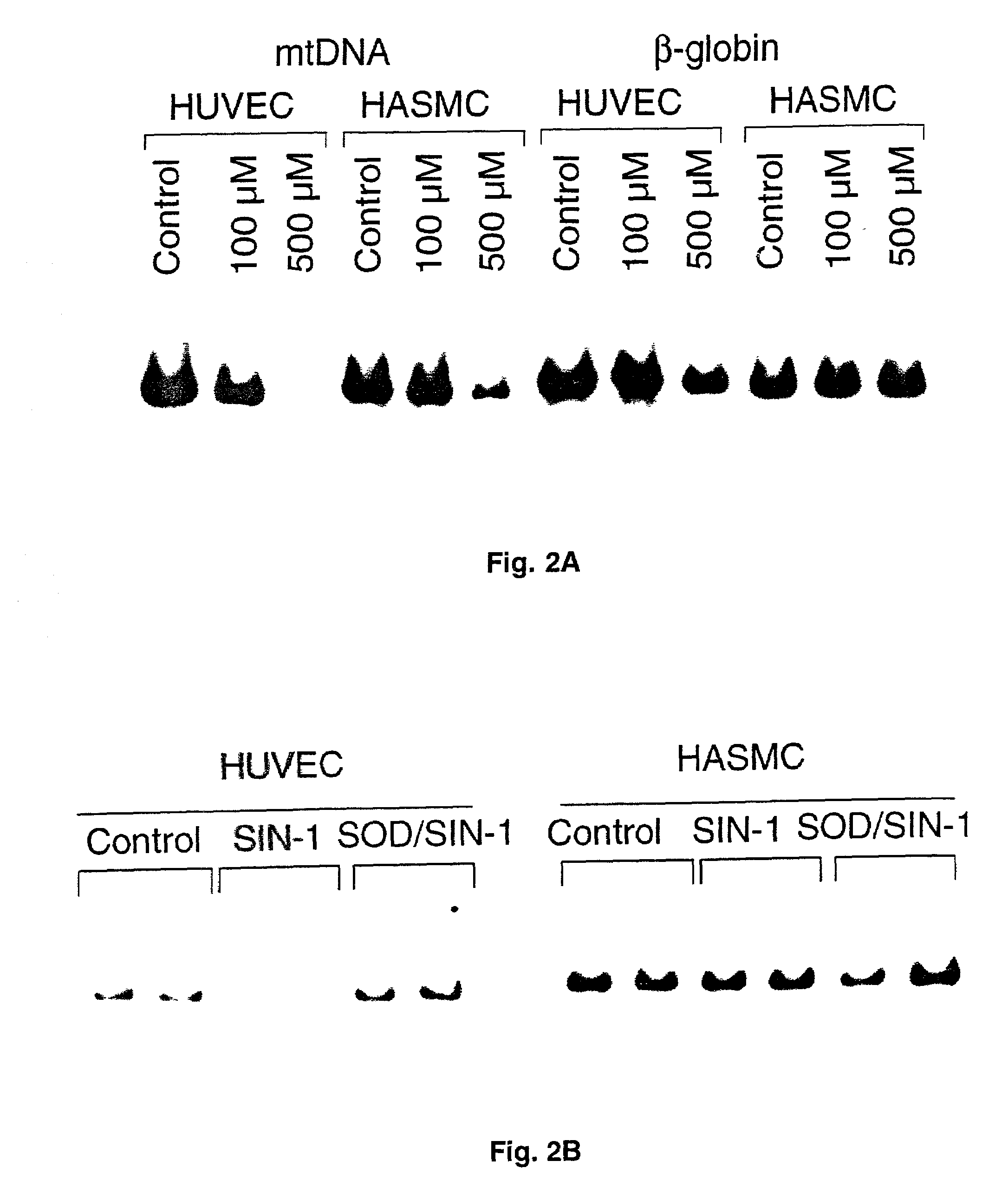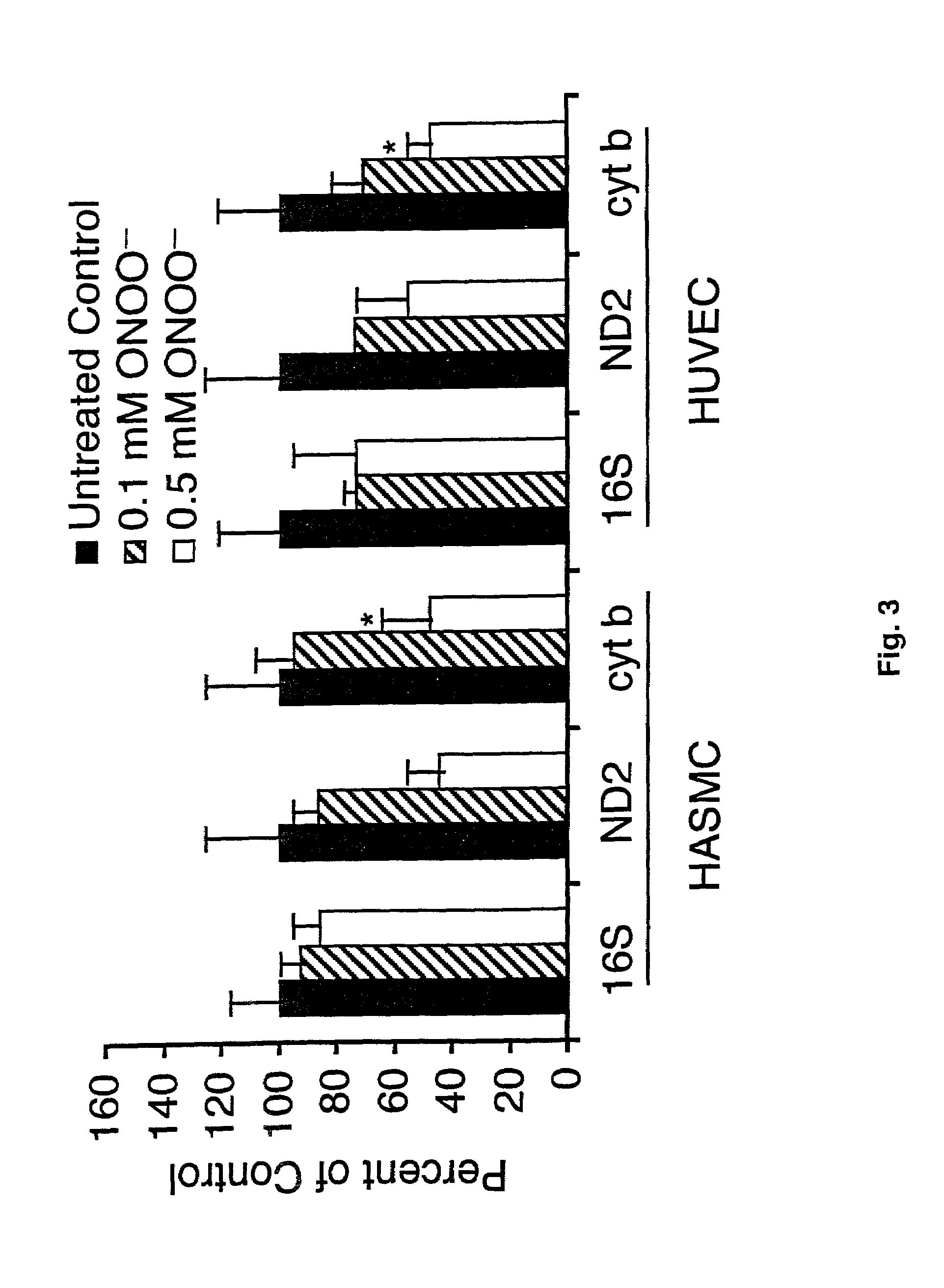Mitochondrial DNA damage as a predictor of coronary atherosclerotic heart disease
a technology of mitochondrial dna damage and coronary atherosclerosis, which is applied in the field of physiology and molecular biology, can solve the problems of limited dna repair capacity, vascular cell dysfunction, and mtdna damage, and achieves increased atherosclerotic lesions and mtdna damage, and increased mitochondrial dna damage.
- Summary
- Abstract
- Description
- Claims
- Application Information
AI Technical Summary
Benefits of technology
Problems solved by technology
Method used
Image
Examples
example 1
In Vitro Cells and Mice
[0047]Human umbilical endothelial vein cells (HUVEC) and human aortic smooth muscle cells (HASMC) were maintained a t 37° C. and 5% CO2 / 95% air in Dulbecco's Modified Eagles Media (HASMC; Cell Gro) or M199 (HUVEC:Cell Gro) supplemented with 10% (HASMC) or 20% (HUVEC) heat inactivated fetal calf serum (Gibco / BRL), HEPES buffer (10 mM), glutamine, penicillin, and streptomycin. Flasks were routinely split every 3-4 days and disassociated for experiments using trypsin-EDTA (Gibco / BRL). Cells were treated with the various reactive oxygen species (controls mock treated with serum-free media) at 70-80% confluence, between passages 5-7.
[0048]The apolipoprotein E (apoE) knockout (− / −) mouse has proven to be a reliable model for development of atherosclerosis. The apoE (− / −) mouse lacks apolipoprotein E, a high affinity ligand for lipoprotein receptors, which are important for LDL uptake from the bloodstream. Consequently, these mice have significantly elevated levels o...
example 2
Reactive Oxygen Species Treatments
[0050]Concentrated H2O2 stock (30%, Fisher) was diluted into phosphate buffered saline (PBS) and the concentration determined by absorbance at 230 nm (30). peroxynitrite was synthesized from sodium nitrite and acidified H2O2 and quantified (31). Xanthine oxidase / lumazine and spermine NONOate were used as low dose O2− and nitric oxide donors, respectively. SIN-1 (3-morpholinosydnonimine, hydrochloride, Molecular Probes) was used to generate higher, equimolar levels of nitric oxide and O2−. Monolayer cultures in 60 mm plates (70%-80% confluent) were exposed to specific reactive oxygen species concentrations for dose response, and time-course experiments in serum-free, phenol red free minimum essential media (MEM) at 37° C. Control monolayers were mock-treated with serum-free and phenol red-free MEM alone. After treatment, cells were washed once with PBS and harvested immediately.
example 3
Quantitative PCR (QPCR) Assay
[0051]The QPCR assay measures the average degree of DNA damage per strand for the two template strands in the genomic segment of interest. Detection of DNA damage by QPCR works on: (1) The premise that any DNA template containing a lesion will stop a thermostable polymerase either directly (25, 32), or, in concert with enzymatic action prior to QPCR (i.e. treatment of samples with FAPY glycosylase will enable detection of 8-oxo-G lesions using QPCR), and, (2) Length mutations (deletions and insertions) will alter the size of the expected QPCR product, leading to decreased yield of the expected QPCR product (i.e. mtDNA deletions will result in QPCR products of sizes smaller than the expected product). Consequently DNA lesions (i.e. strand breaks, base modifications, DNA adducts, and apurinic sites), and length mutations (i.e. mtDNA deletions), will either block progression of the polymerase (i.e. lesions) or yield PCR products of altered size (i.e. mtDNA ...
PUM
| Property | Measurement | Unit |
|---|---|---|
| concentration | aaaaa | aaaaa |
| oxidative stress | aaaaa | aaaaa |
| length | aaaaa | aaaaa |
Abstract
Description
Claims
Application Information
 Login to View More
Login to View More - R&D
- Intellectual Property
- Life Sciences
- Materials
- Tech Scout
- Unparalleled Data Quality
- Higher Quality Content
- 60% Fewer Hallucinations
Browse by: Latest US Patents, China's latest patents, Technical Efficacy Thesaurus, Application Domain, Technology Topic, Popular Technical Reports.
© 2025 PatSnap. All rights reserved.Legal|Privacy policy|Modern Slavery Act Transparency Statement|Sitemap|About US| Contact US: help@patsnap.com



